For years, I have been running into Brian Talley, of Talley Vineyards, at a variety of Pinot Noir events. It was time for an in-depth, off the grid “run in” when the worlds of a venerable vintner and a wayward writer collide.
On a crisp winter morning, Brian was waiting for me outside his winery with a broad smile and a plan. I was going to spend a day in “Talleyworld,” which included a barrel tasting and attending the winery’s weekly staff luncheon.
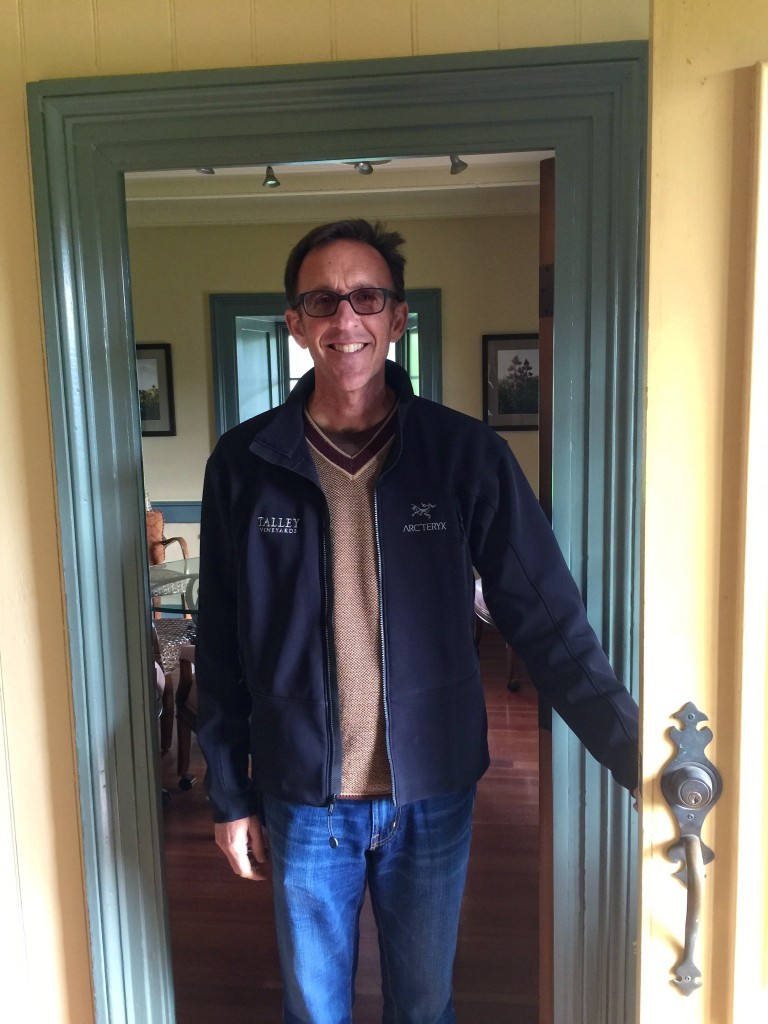
What instantly struck me about Brian is how friendly and hands-on he is. From offering a customer a hand in the parking lot, to carrying a case of wine to a visitor’s car, to greeting each and every staff member and stopping to having a chat, he is clearly not a typical boss. A hallmark of an owner is how he relates to his customers and his employees. Brian is a poster child for excellence in both areas.
My tour of the winery began at El Rincon Adobe. Built in 1860, this building was the family home for one of the early settlers in the region. Featured on the winery’s logo, El Rincon Adobe was the winery’s tasting room from 1988-2002. This adobe building was built with bricks made from clay and soil from the local area, and serves to remind Brian of the deep commitment the winery has to preserving the soil and local history.
A lively staff lunch, prepared with fresh produce from Talley Farms, followed. My salad featured some the best greens that I have ever consumed. The meal was accompanied by a double magnum of 2010 Chardonnay. Opened for a staff party two days prior, this delicious wine showed very little fruit loss and no hint of oxidation. Impressive.
Talley is a generational grower. He comes from a family of growers that began farming in the Arroyo Grande area in the ’40s. They began with produce and eventually added grape growing to their portfolio. Talley soon added two Edna Valley vineyard holdings to their portfolio, Oliver’s and Stone Corral, which he shares with two other producers. A thoughtful and patient approach to viticulture led to hiring some of the top specialists in the area in order to capitalize on the vineyards’ full potential. Fortuitously located next to door to Cal Poly, San Luis Obispo, Talley has benefited from hiring graduates from the University’s renowned enology program.
Environmentally conscious, Talley Vineyards, without fanfare, went nearly all green. 80% of their energy is generated by solar panels.
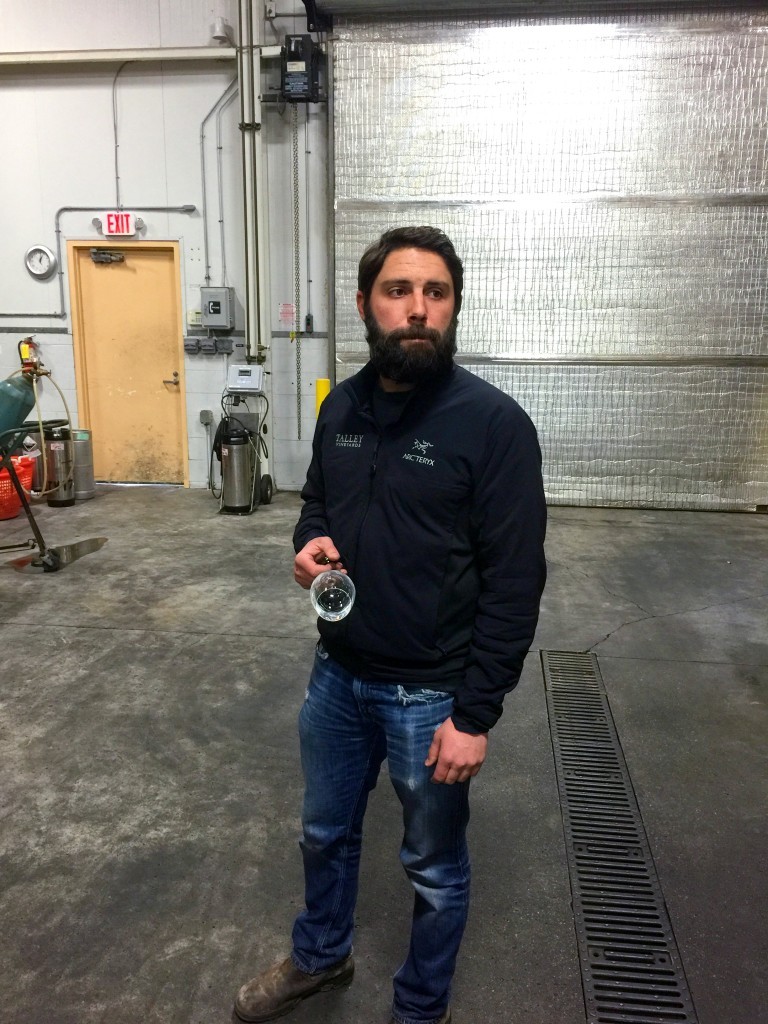
Talley has mastered the treacherous path of striking a perfect irrigational balance between water deprivation and dry farming. Both Brian and his winemaker, Eric Johnson, are in constant vineyard monitoring mode. They carefully note the vines’ capacity to handle the stress of low moisture viticultural practices. The determination occurs through experience, technology, and visual cues, a crucial tool in a winemaker’s arsenal.
Brian, Eric and I spent the afternoon in the cellar barrel tasting, followed by finished wine tasting of the entire portfolio. Talley Vineyards has two brands, Talley and Bishop’s Peak, a more value orientated brand.
I find barrel tastings with vintners exceptionally instructive. Winemakers foster a special relationship with their wines. The wines instruct the winemaker. Watching this transference of information from the barrel to the vintner is a unique and inspiring experience.
Every barrel in the winery’s cellar is lotted by vineyard section and harvest time. Reflective of their painstaking approach, Brain and Eric have traveled to the actual forests and cooperages to identify the ideal barrels that best enhance their particular fruit and produce the desired flavor profiles.
Brian’s goal for his Pinot Noir is to produce the most authentic and “charming” New World wines he can. In order to accomplish this goal, he starts in the vineyard, where details matter. Mistakes in the vineyard lead to challenges in the cellar. Row orientation, shoot positioning, irrigation regime and vine support are optimized. A vintner’s best education doesn’t come from a college degree, it comes from the vineyard, and learning on the job and sharing experience with fellow winemakers. I am constantly amazed by the level of collaboration in the winemaking world, where the spirit of camaraderie and free flow of information prevail.
Many winery owners begin by buying a great piece of land, hiring top viticulturists and expensive winemakers who design a wine that reflects the owners vision for the final product. This approach often creates highly stylized wines.
Brian’s process was more organic. He had the patience to engage in the slow, sometimes painful process of getting to know his vineyard. He has learned the nuances of his land, climate and vines. He learned to coax the best from what nature has provided. His wines represent the essence of place.
Over time, paying close attention to the vineyard, nurturing the vines, and patient remediation of occasional problems yield consistent results. Brian and Eric subscribe to a “less is more” approach by abstaining from applying trendy techniques and or cellar tricks. Inspired by Frederic Mugnier, their philosophy is: “When in doubt, don’t.”
The world’s top estates all share the same philosophy: figure out which blocks produce the best fruit and give them the utmost care. The larger the investment in vineyard, the less to do in the cellar.
Starting with good ingredients is crucial for a winemaker, much like it is for a chef. Paying close attention in the cellar, preventing potential pitfalls is the next order of business. Ultimately it’s the result that counts, the arduous journey is only known to the close-knit group, the customer right expertly a seamless, superb effort.
Interestingly, Talley uses exclusively native yeasts, a rare practice. However, exhaustive comparative blending trials show that it works for their particular vineyard. They also do extensive stem inclusion experimentation, with many wines seeing varied percentages of whole cluster.
We tasted a number of 2013 and 2014 Chardonnay lots, some from thirty-four year old vines, which share a birthday with the winemaker! Talley has steadily decreased their new wood usage over the last few years, and it shows. I was struck by the vivid acidity and minerality shown by these young wines.
As Eric Johnson hilariously put it, their Chardonnay barrel program is supposed to resemble a watch rather than a whole suit as compared to an outfit. Brian’s vision for his Chardonnay is all about coaxing the charm out of this diverse, versatile variety. The aesthetic they seek is about harmony, balance, and lively energy. Perhaps that is why, even though I came to Edna Valley seeking the area’s finest Pinot Noir, I found myself falling madly in love with their Chardonnays.
Oliver’s Vineyard Chardonnay was perhaps my favorite of the group, showing gorgeous floral elements, bright acidity and a long finish. It will be released next September to those on the wineries mailing list. (Hint: sign up now)
Their Pinot Noir program typically sees one-third new oak. The 2013 Pinot Noirs are a show stealers, with beautifully integrated fruit and elongated tannins.
Talley also makes a delicious, and well priced Cab, from Paso Robles Santa Margarita Ranch vineyard under their Bishops Peak label.
Talley’s wines enjoy a very loyal following. Some consumers have been on their mailing list since the second vintage, and it’s easy to see why. Unlike other top wineries, their prices have scarcely gone up; yet another way Talley Vineyards shows appreciation for the ongoing loyalty.
My Talley experience was everything I had hoped for and more. This producer of distinction reinforced, yet again, the importance of trusting your land and its caretakers. Consumers who follow the brand can clearly taste it, and it keeps them coming back for more. Those who are not familiar with it, are strongly urged to sample for the themselves what decades of dedication can deliver.

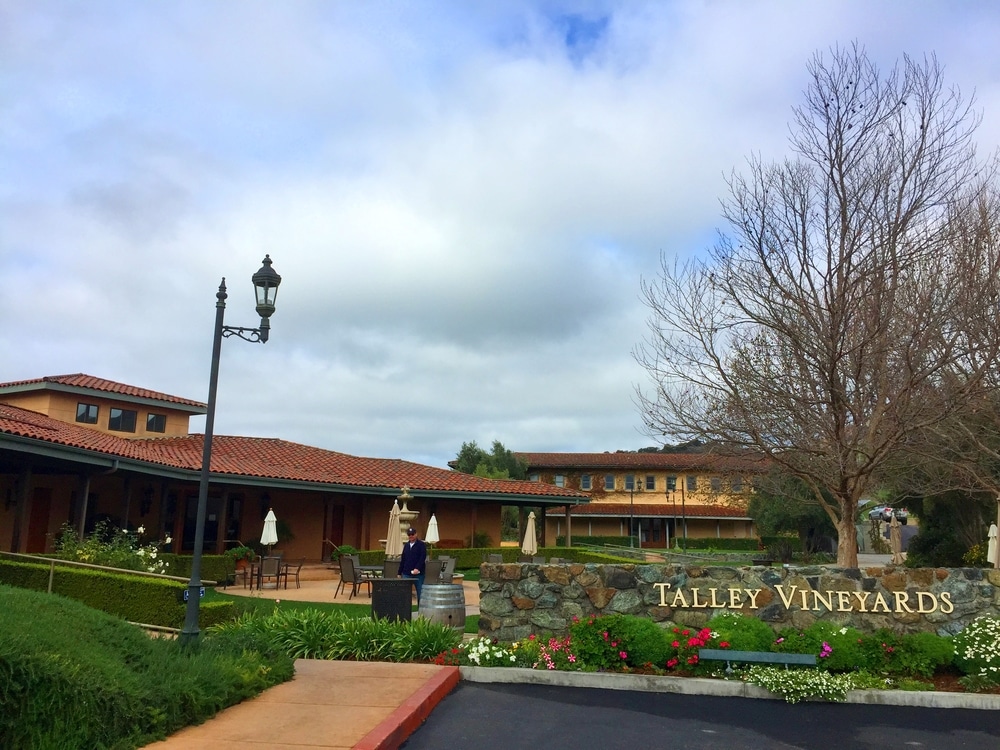

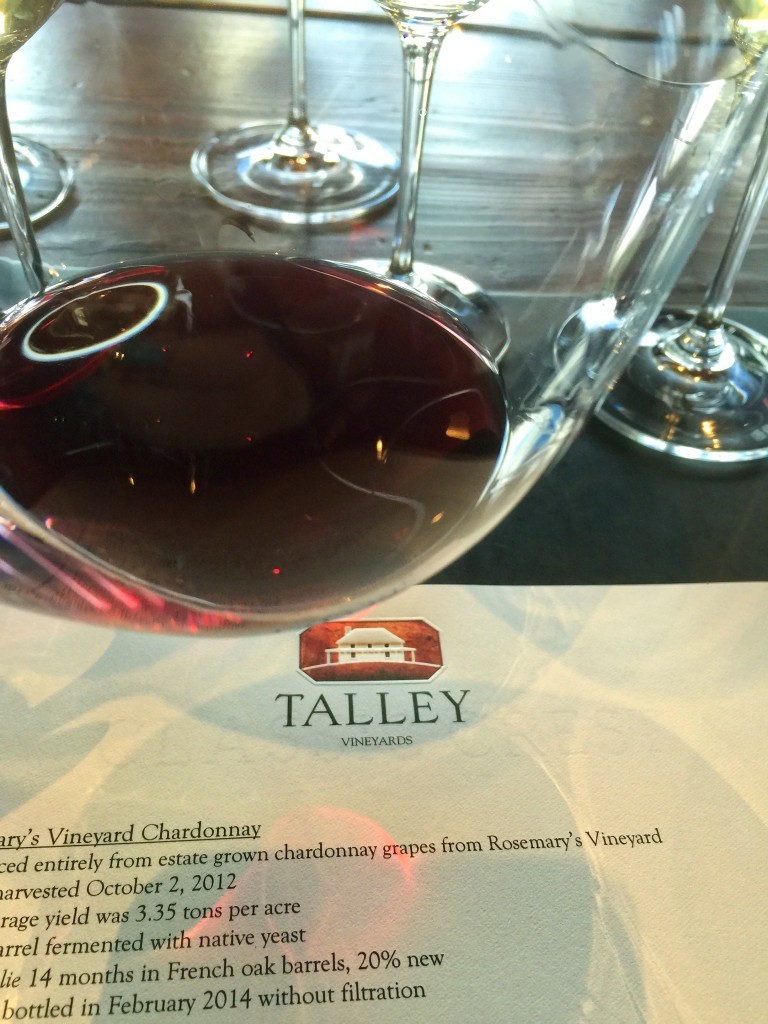

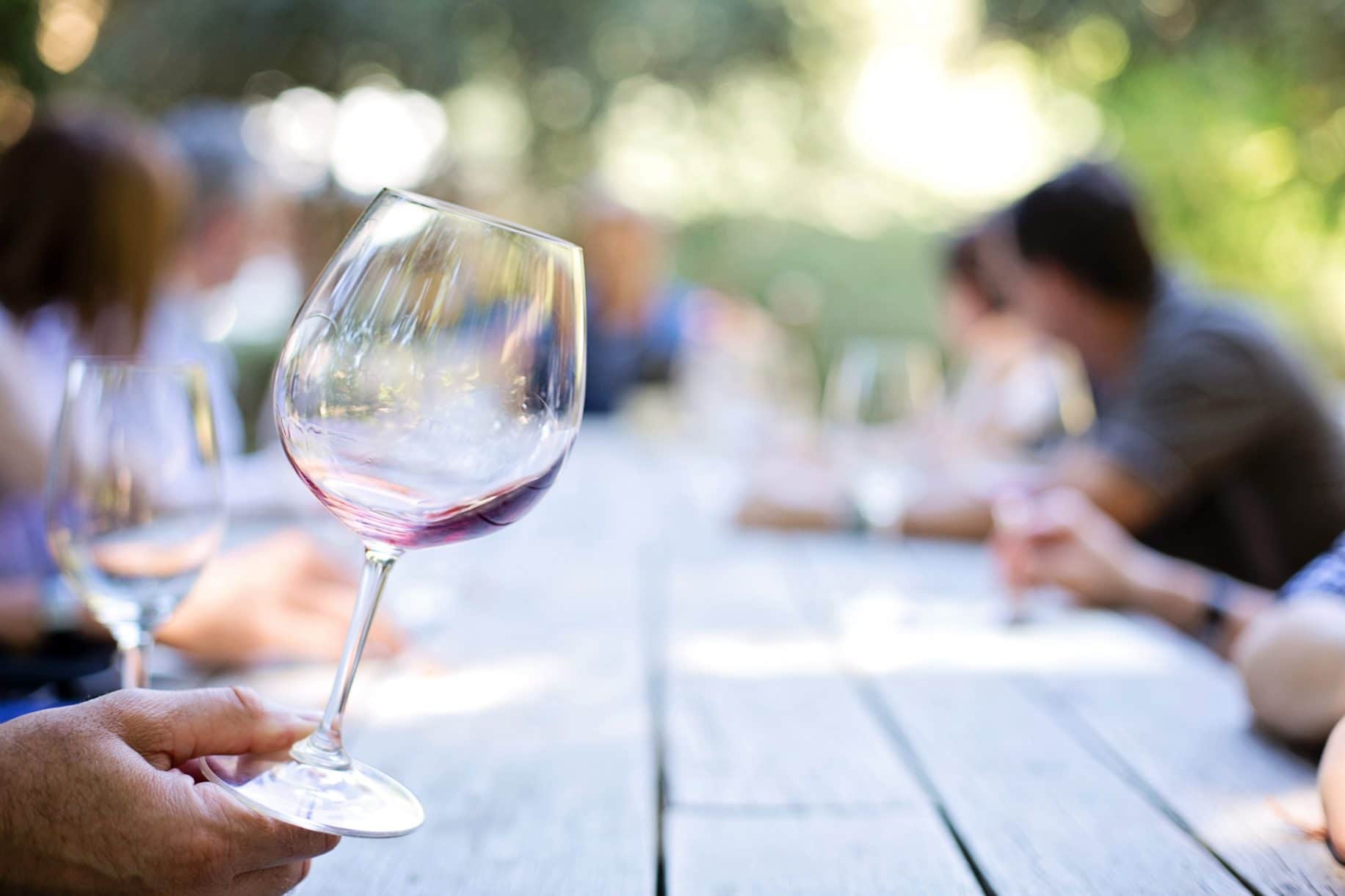

You must be logged in to post a comment.